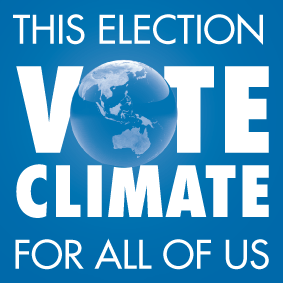From an Article by Michael E. Mann, Washington Post, November 2, 2018
PHOTO in NEWSPAPER ARTICLE: Thick smoke covers a beach near the village of Sarti in Halkidiki, northern Greece, as a wildifire rages in the area on October 25th.
Summer 2018 saw an unprecedented spate of extreme floods, droughts, heat waves and wildfires break out across North America, Europe and Asia. The scenes played out on our television screens and in our social media feeds. This is, as I stated at the time, the face of climate change.
It’s not rocket science. A warmer ocean evaporates more moisture into the atmosphere — so you get worse flooding from coastal storms (think Hurricanes Harvey and Florence). Warmer soils evaporate more moisture into the atmosphere — so you get worse droughts (think California or Syria). Global warming shifts the extreme upper tail of the “bell curve” toward higher temperatures, so you get more frequent and intense heat waves (think summer 2018 just about anywhere in the Northern Hemisphere). Combine heat and drought, and you get worse wildfires (again, think California).
Climate scientists have become increasingly comfortable talking about these connections. Much like how medical science has developed key diagnostic tools, we have developed sophisticated tools to diagnose the impact climate change is having on extreme weather events.
One of these tools, “extreme event attribution,” can be thought of as climate science’s version of an X-ray. In this case, a climate model is run both with and without the human effect on climate. One then compares how often a particular extreme event happens in both the “with” and “without” cases. If it occurs sufficiently more often (i.e., beyond the “noise”) in the former case, a study can “attribute” and quantify how climate change affected the extremeness of the event.
The scorching European heat wave this summer, according to one such study, was made more than twice as likely by global warming. The record rainfall in North Carolina from Hurricane Florence was, according to another study, increased by as much as 50 percent by warming oceans.
The climate models used in these sorts of studies represent remarkable achievements in the world of science. But no tool is perfect. In our medical analogy, some injuries — such as soft tissue damage — are too subtle to be detected by an X-ray. So medical professionals developed even more sophisticated tools, such as MRI. Similarly, some climate-change impacts on extreme weather are too subtle to be captured by current generation climate models.
In a study my co-authors and I recently published in the journal Science Advances, we identified a key factor behind the rise in extreme summer weather events (such as the ones that played out in summer 2018) that — as we demonstrate in our study — is not captured by current generation climate models.
Using an alternative approach based on a combination of models and real-world observations, we showed that climate change is causing the summer jet stream to behave increasingly oddly. The characteristic continental-scale meanders of the jet stream (its “waviness”) as it travels from west to east are becoming more pronounced and are tending to remain locked in place for longer stretches of time.
Under these circumstances — when, for example, a deep high-pressure “ridge” gets stuck over California or Europe — we usually see extreme heat, drought and wildfire. And typically there’s a deep low-pressure “trough” downstream, stuck over, say, the eastern United States or Japan, yielding excessive rainfall and flooding. That’s exactly what happened in summer 2018. The spate of extreme floods, droughts, heat waves and wildfires we experienced were a consequence of such jet stream behavior.
Our study shows that climate change is making that behavior more common, giving us the disastrous European heat wave of 2003 (during which more than 30,000 people perished), the devastating 2011 Texas drought (during which ranchers ranchers in Oklahoma and Texas lost 24 percent and 17 percent of their cattle, respectively), the 2016 Alberta wildfire (the costliest natural disaster in Canadian history) and yes, the extreme summer of 2018.
Just as climate models almost certainly underestimate the impact climate change has already had on such weather extremes, projections from these models also likely underestimate future increases in these types of events. Our study indicates that we can expect many more summers like 2018 — or worse.
Climate-change deniers love to point to scientific uncertainty as justification for inaction on climate. But uncertainty is a reason for even more concerted action. We already know that projections historically have been too optimistic about the rates of ice sheet collapse and sea-level rise. Now it appears they are also underestimating the odds of extreme weather as well. The consequences of doing nothing grow by the day. The time to act is now.
>>> Michael E. Mann is director of the Penn State Earth System Science Center and co-author with Tom Toles of “The Madhouse Effect: How Climate Change Denial Is Threatening Our Planet, Destroying Our Politics, and Driving Us Crazy.”

